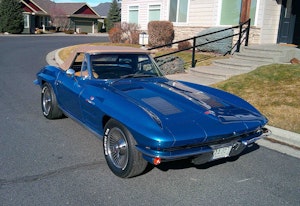Media | Articles
Why does a Harley V-twin sound like that?
There are many great mysteries in the world, and to some people the how and why of the Harley Davidson V-twin’s endurance is one of them. Over one hundred years have passed, and yet, the design has barely changed. Why would Harley choose that path? Why would buyers keep shelling out for it? Isn’t there a better way forward? In short, probably, but that doesn’t mean all change is good. YouTube superstar FortNine took a dive into why the heritage American brand still does things the way it does.
A major component of Harley’s lasting appeal is the sound of the engine—a kind of potato-potato-potato rhythmic mantra of America engineering. Making a V-twin is fairly easy, but Harley chose the easiest way to do it in having the two connecting rods share a single pin on the crankshaft. This means the 45-degree offset of the cylinders is also a 45-degree offset in ignition. That short gap between power strokes means there is a “bang-bang-pause” sound that rhythmically comes out of the exhaust. The wasted-spark ignition also affects the sound, since it is throwing spark into the front cylinder that is not on its power stroke just because the rear cylinder is. The signature sound really is that simple.
When I say signature sound, it is worth noting the difference between “signature” and “trademarked”. Harley Davidson tried, unsuccessfully, to trademark its exhaust note in 1994. Vibration is just as important as noise, and anyone that has ridden a Harley either loves or hates these rumblings. That shake is a byproduct of the two-connecting-rods-one-crankpin arrangement. This design makes is near impossible to counterbalence the engine to smooth things out, so instead of trying, Harley leans into it.
The vibration of the unbalanced V-twin would be quite aggressive and noticeable in the vertical direction, which would be very noticeable. The engineers at Harley didn’t try and completely cancel that out, but rather turned it 90-degrees to become a forward and back motion. Watch a big twin idle next to you at a stoplight and you’ll notice this front-to-back action. The setup can be initially confusing, but it makes sense when you consider how that fore/aft shimmy is much less perceptible when riding.
Marketplace
Buy and sell classics with confidence
Is it an aging design? Certainly, but that doesn’t mean its inherently bad. The simple V-twin is convenient and now a staple of the brand. Of course, if you are going to criticize the design, it helps to have ridden one first. What looks terrible on paper is not so bad on the road. After all, it’s worked for 100 years.










